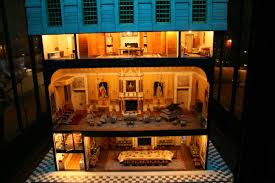An Insight into Queen Mary’s Dolls House

Introduction
Queen Mary’s Dolls House is a remarkable miniature house, widely regarded as the most famous dolls’ house in the world. Situated in Windsor Castle, this exquisite creation reflects the grandeur of early 20th-century British craftsmanship. It holds significant cultural and historical relevance, showcasing the artistic and architectural excellence of the era.
History and Construction
Created between 1921 and 1924, Queen Mary’s Dolls House was a gift from the people of Wales to Queen Mary, wife of King George V. Commissioned by Sir Edwin Lutyens, a prominent British architect, the house stands at about 1.5 meters high and 3 meters long, meticulously detailed to represent an actual royal residence. The dolls’ house contains over rooms, complete with authentic furnishings, including silverware by prominent craftsmen and fine artworks. Each aspect of the house has been lovingly crafted, from the intricate wallpapers to the working electricity, making it a remarkable representation of the period.
Significance of Features
Queen Mary’s Dolls House incorporates numerous elaborate features that provide insights into the domestic lives of the British aristocracy. The library, for example, boasts over 200 miniature books, many written by renowned authors of the time. The garden, designed by the famous landscape gardener Gertrude Jekyll, features tiny plants and flowers, set within a stunning layout that mirrors a traditional English garden. The attention to detail is astonishing; even the kitchen has miniature pots and pans that resemble their full-sized counterparts.
Public Display and Accessibility
Since its completion, Queen Mary’s Dolls House has been on public display in the Drawings Gallery at Windsor Castle, attracting thousands of visitors every year. It serves not only as a delightful attraction for dollhouse enthusiasts but also as a historical artifact, allowing visitors to glimpse the opulence and style of a bygone era. The interest in the dolls’ house extends beyond aesthetics, as it is often used in educational programs to teach about royal history and craftsmanship during World War I and II.
Conclusion
Queen Mary’s Dolls House stands as an important cultural landmark, preserving the intricacies of British history and artistry. Through its detailed construction and elegant design, it offers a unique view into the life of British royalty. The ongoing fascination with this dolls’ house is a testament to its significance, and it is likely that its charm will continue to captivate future generations, making it a cherished part of Britain’s cultural heritage.
